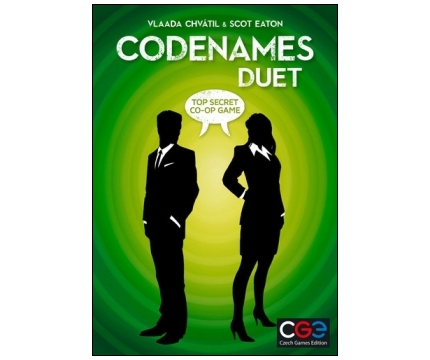
This ends the game! The team that contacted the assassin loses. If the field operative touches the assassin, the word is covered by the assassin card. If the field operative touches a card belonging to the other team, the word is covered by one of the other team's agent cards. If the field operative touches an innocent bystander, the spymaster covers it with an innocent bystander card. If the field operative touches a card belonging to his or her team, the spymaster covers the word with an agent card in that color. The operatives indicate their official guess when one of them touches one of the codenames on the table. They can debate it amongst themselves, but the spymaster must keep a straight face. When the spymaster gives a clue, his or her field operatives try to figure out what it means. On later turns, some codenames will be covered up, so a clue that is not legal now might be legal later. Your clue cannot be any of the codenames visible on the table. For example, don't say, "This may be a bit of a stretch…" You are playing Codenames. Getting four words with one clue is a big accomplishment. You are allowed to give a clue for only one word (cashew: 1 ) but it's fun to try for two or more. Both of these grow on trees, so you say tree: 2. You also say one number, which tells your teammates how many codenames are related to your clue.Įxample: Two of your words are NUT and BARK. When you think you have a good clue, you say it. If you are the spymaster, you are trying to think of a one-word clue that relates to some of the words your team is trying to guess. The starting team is indicated by the 4 lights on the edges of the key card. The innocent bystander cards and the assassin should be kept in between, where both spymasters can reach them easily. It will be one of that team's agent cards for the duration of the game. The double agent belongs to whichever team starts. This helps everyone remember which team they are on. The blue agent cards should be in front of the blue spymaster. The red agent cards go in a stack in front of the red spymaster. The starting team will give the first clue of the game. The four lights around the edge of the key card indicate which team starts. Pale squares are innocent bystanders, and the black square is an assassin who should never be contacted at all. Red squares correspond to words that Red Team must guess (red agents).

Blue squares correspond to words that Blue Team must guess (blue agents). The key corresponds to the grid on the table. And don't let the field operatives see it. The spymasters should choose the key card randomly and slide it into the stand between them.Īny side can be up. The keyĮach game has one key that reveals the secret identities of the cards on the table. Note: While shuffling the codename cards, be sure to flip over half the deck once in a while. Randomly choose 25 codenames and place them on the table in a 5-by-5 grid. The other players sit across from their spymasters. Both spymasters sit on the same side of the table. You need at least four players (two teams of two) for a standard game.Įach team chooses one player to be their spymaster. Players split up into two teams of similar size and skill.


 0 kommentar(er)
0 kommentar(er)
